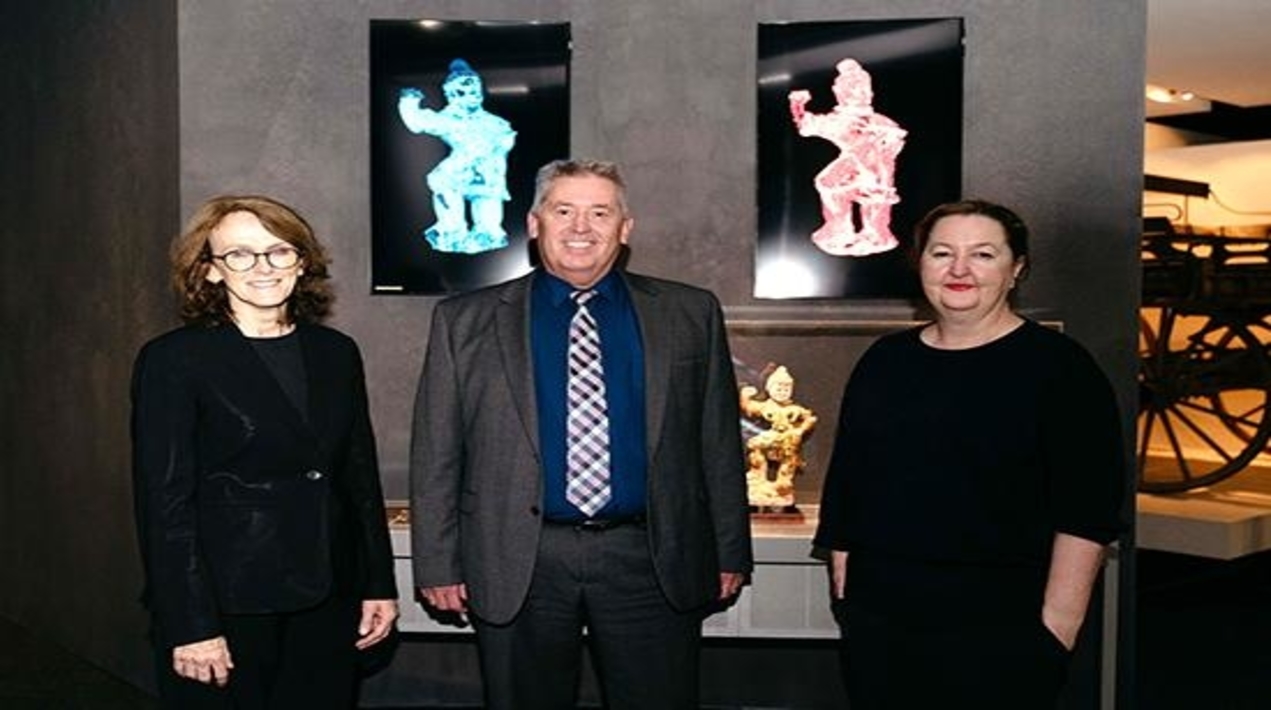
ANSTO, the home of Australia’s nuclear science expertise and the Powerhouse Museum, home of Australia’s excellence and innovation in the applied arts and sciences, will collaborate on research projects, establish an Indigenous Cultural Research Scholarship and combine efforts on STEM outreach activities. It was noted that this was a great opportunity to align the two parties’ common areas of interest in promoting the applied arts and sciences.
The CEO of ANSTO and the CEO of the Powerhouse Museum signed a Memorandum of Understanding at the opening of The Invisible Revealed, a new exhibition featuring a range of important artefacts from the museum analysed and reconstructed in visually stunning 3D using nuclear and accelerator techniques, on 3 December 2021. ANSTO can offer its advanced and non-destructive analytical capabilities to support research on the unique objects in the museum collection, and share these new insights with the public, ANSTO’s CEO added.
The boundaries of art and science converge in this technologically and aesthetically spectacular series of displays, that comprise the original objects alongside what’s previously been hidden in an eye-catching digital display. The exhibition showcases 26 objects from the Powerhouse collections that were analysed using state-of-the-art neutron scattering techniques at ANSTO’s Australian Centre for Neutron Scattering, advanced radiocarbon dating at ANSTO’s Centre for Accelerator Science in Sydney and X-ray techniques by ANSTO’s Australian Synchrotron-based in Melbourne.
Dr Tomasz Bednarz of the Expanded Perception & Interaction Centre (EPICentre) at UNSW assisted with digital visualisation techniques. The information, which is gained by the penetrating power of neutrons from the OPAL reactor, the sensitivity of accelerators and powerful synchrotron X-rays, can be used to determine the composition of objects, their age and see inside the artefacts.
EPICentre is a shared UNSW research centre located at the UNSW School of Art & Design campus, in the historic Block C. building. The Centre undertakes visualisation research in the fields of art, design, science, medicine and engineering. EPICentre’s major research facilities are accessible to UNSW and external researchers. Government and industry users are also welcome. The staff of the Centre provide research collaboration, technical support, education and training to researchers accessing the facilities.
EPICentre makes decades of accumulated historic and massive new data visually accessible. Cutting-edge computing, 3-D immersive and screen-based technologies render this data visible and enable scientists ‘to get inside’ and be immersed in some of the most challenging and complex medical and health problems.
Senior Instrument Scientists Dr Joseph Bevitt, Dr Anton Maksimento and Dr Daniel Hausermann coordinated the tomographic imaging on the Dingo instrument at the Australian Centre for Neutron Scattering and the Imaging and Medical beamline at the Australian Synchrotron respectively.
Under the agreement, the Powerhouse will have access to the analytical techniques available at ANSTO and share results in public displays and exhibitions as appropriate. A new Indigenous Cultural Research Scholarship will support investigations linked to Aboriginal cultural heritage materials in the Powerhouse collections using advanced techniques at ANSTO. ANSTO has multiple techniques that have proved highly useful in confirming the antiquity of Indigenous artefacts and can reveal other information not accessible by other analytical techniques.
The partnership will also increase outreach to the general public and secondary school students, and demonstrate another way we can link science with the applied arts, according to the National Education and Engagement Manager, who was instrumental in liaising with the Powerhouse on the MOU.
The Powerhouse Museum, Sydney Observatory and Museums Discovery Centre are home to Australia’s excellence and innovation in the applied arts and sciences.
















